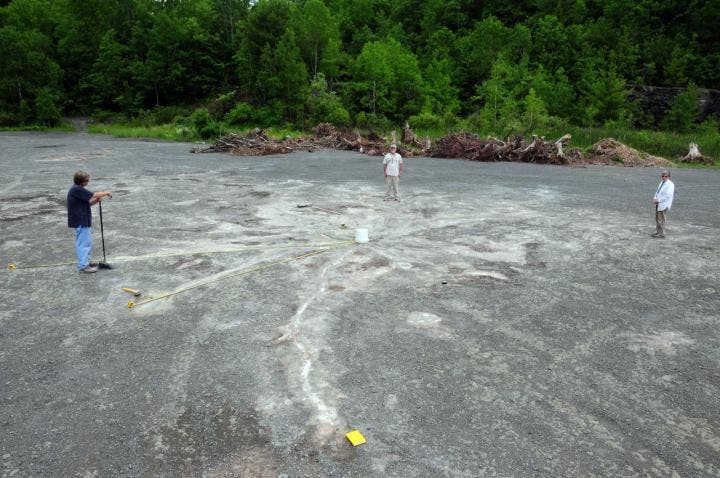Archeologists working in the Catskill region near Cairo, New York have found the fossilized roots of a 386-million-year old forest. The find showcases that the transition towards modern forests started much earlier than previously believed.
The fossil roots were found just 25 miles away from the site where the previous oldest forest was found. The root systems, although indicative of yet-primitive trees, showcase the transition towards forests as we know them today. Furthermore, they show that this shift began earlier in the Devonian Period than typically believed.

The root of progress
“The Devonian Period represents a time in which the first forest appeared on planet Earth,” says first author William Stein, an emeritus professor of biological science at Binghamton University, New York. “The effects were of first order magnitude, in terms of changes in ecosystems, what happens on the Earth’s surface and oceans, in global atmosphere, CO2 concentration in the atmosphere, and global climate.”
“So many dramatic changes occurred at that time as a result of those original forests that basically, the world has never been the same since.”
Stein and his co-authors on the current paper are the ones who, back in 2012, discovered “footprint evidence” of a different fossil forest at Gilboa (also in the Catskills). The Gilboa forest has since been deemed the oldest forest on Earth. The discovery near Cairo however, might soon take the title. The newly-discovered forest, just a 40-minute drive from the original site, also shows a dramatically different composition, allowing researchers to track how forests morphed over a very dynamic stretch of their evolutionary history.
The Cairo site revealed three unique root systems, the team explains. This led them to believe that forests in the Devonian Period were composed of different types of trees, each occupying a different place in the local ecosystem — much like today. Note that these plants aren’t ‘trees’ as we know them today, but rather their evolutionary ancestors.
The team first identified a root system that likely belonged to a palm-like tree called Eospermatopteris. This was also found at the Gilboa site and had relatively rudimentary roots. The team says it was much like a weed back in its day and could wrangle a place in many different environments — which would explain its presence at both sites. Due to its limited root system, and especially because of the limited range these roots could grow to, the team believes that Eospermatopteris plants probably lived one or two years and were then replaced.
They also found evidence of a tree called Archaeopteris, which shares a number of characteristics with modern seed plants.
“Archaeopteris seems to reveal the beginning of the future of what forests will ultimately become,” says Stein. “Based on what we know from the body fossil evidence of Archaeopteris prior to this, and now from the rooting evidence that we’ve added at Cairo, these plants are very modern compared to other Devonian plants.”
“Although still dramatically different than modern trees, yet Archaeopteris nevertheless seems to point the way toward the future of forests elements.”
The most surprising find was of a third root system that belonged to the class Lycopsida. These “scale trees” were only known to exist from the (later) Carboniferous Period. Although no body fossils have been found for the plants in the Cairo site, the roots suggest that such plants “were already in the forest, but perhaps in a different environment, earlier than generally believed”, according to Stein. For now, the team is tempering their enthusiasm and looking for additional fossils to confirm this find.
In the future, Stein and his team hope to continue investigating the Catskill region and compare their findings with fossil forests around the world.
“It seems to me, worldwide, many of these kinds of environments are preserved in fossil soils. And I’d like to know what happened historically, not just in the Catskills, but everywhere,” Says Stein. “Understanding evolutionary and ecological history — that’s what I find most satisfying.”
The paper “Mid-Devonian Archaeopteris Roots Signal Revolutionary Change in Earliest Fossil Forests” has been published in the journal Current Biology.


